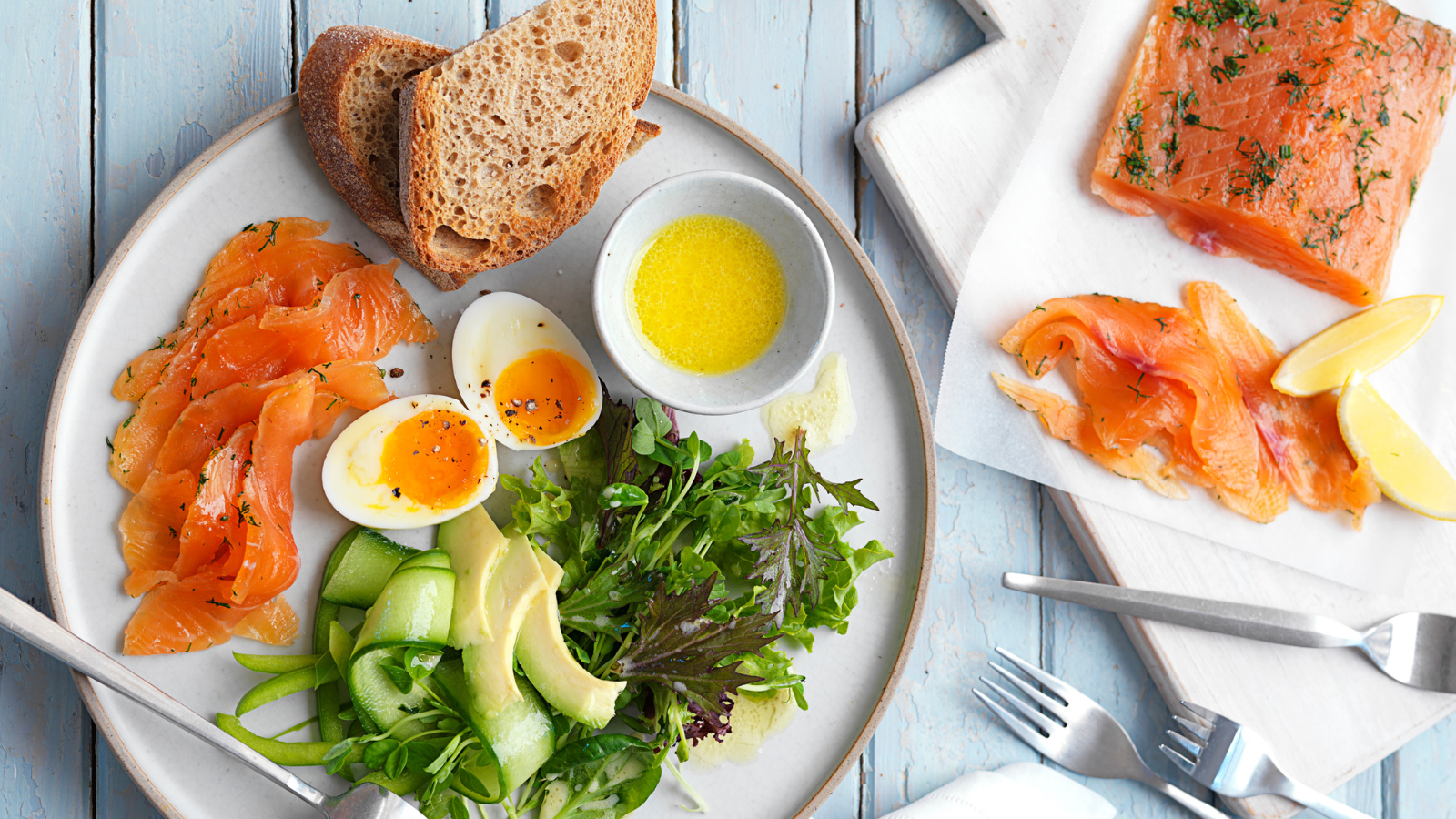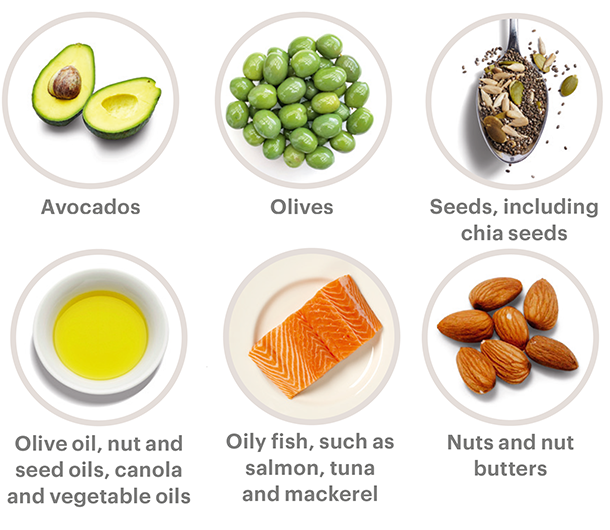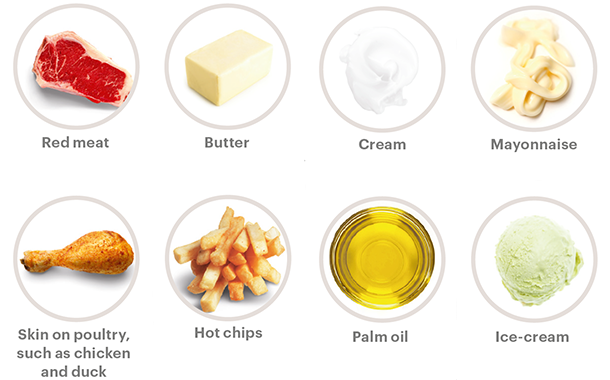The difference between healthy and unhealthy fats


How 'good' fat can help you towards your weight loss goals
After years of being warned off fats and encouraged to choose low-fat products if we want to lose weight, new research suggests fat is a food group that has been unfairly labelled.
“For decades we believed that a low-fat diet was essential for weight loss. Evidence now suggests this is not the case and that a low-carbohydrate, high-fat diet might be more beneficial for weight loss.”
The theory is that a lot of low-fat foods are made tastier with added sugars. Evidence may also suggest that a plant-based, low-carb, high-fat diet is superior to an animal-based one. “The jury is out, however, as to the long-term safety of maintaining a high-fat diet in terms of heart health,” says Dr Clare Ballingall, chair of the Royal Australian College of General.
The idea that low-fat foods are made palatable by adding more sugar – a UK study found low-fat alternatives contained as much as five times more of the white stuff than their full-fat equivalents – means we need to look at nutrition labels carefully, say experts.
“Read the information on low-fat processed foods to check for higher sugar and salt contents and look to see what nutritional value they have – or, more often than not, have less of,” says Julie Gilbert, accredited practising dietitian. “Full-fat products, such as whole-milk dairy products, will contain essential vitamins and minerals that our bodies need to function efficiently.” So if we’re going to ditch low-fat products, how do we know which fats to choose instead? The first thing to understand is why our bodies need fats, says Gilbert.
“The right kind of fats are good for our hearts, skin, brain health and cell structure,” says Gilbert. “We also need them to transport fat-soluble vitamins around our bodies.”
Why our bodies need fat
Many dietary fats are referred to as ‘essential’ fats because our bodies need them to function properly. Fat is crucial for the nervous system, improves fat-soluble vitamin uptake (including vitamins A, D, E and K which promote growth and protect reproductive health) and can guard against heart disease. The key is including the right kind of fat in your diet.
You don’t necessarily have to shy away from those red labels on the supermarket shelves. Arm yourself with the facts about ‘good’ and ‘bad’ fats and you’ll soon be able to differentiate between a mono and a trans – or put simply, what will improve your health and help towards your weight loss goals, and what won’t.
Is butter healthy?
What makes a fat a ‘good’ fat and does this mean we can bring back butter? Before we all start slathering the yellow stuff on our toast, dietitian Aloysa Hourigan wants to make it clear that, like most things in life, it’s about balance.
“Butter is 60 per cent saturated fat so you don’t want to be using heaps of it, but a little bit, balanced with using a healthier fat, such as olive oil, at other times, is fine,” she says.
Interestingly, a study in The New England Journal of Medicine found people on a low-carb diet shed kilos faster and had better cholesterol levels than those on a low-fat diet, even though the low-carb group was taking in more saturated fat. Part of the reason could be to do with the level of satisfaction fats bring.
“The good thing about fats is that while they’re energy dense, they will help with satiety as they slow down the rate of digestion,” says Hourigan. “That’s why I’d always choose an oil and vinegar dressing for my salad over a low-fat version.”
Did you know? ‘Bad’ cholesterol is known as LDL or low-density lipoprotein. Almonds, vitamin B3 and green tea can help in the reduction of LDL, and vitamin B3 also helps increase HDL or ‘good’ cholesterol.
Types of ‘good’ and ‘bad’ fat
Unsaturated fats - eat a little every day
Monounsaturated fats – Found in olive oil, almonds, cashews, peanuts, peanut butter, sesame seeds and avocado, these raise ‘good’ (HDL) cholesterol and lower ‘bad’ (LDL) cholesterol. This type of fat can also help prevent fat around the stomach area.
Polyunsaturated fats – These fats lower LDL cholesterol and contain essential omega-3 fatty acids, which promote brain and heart health. They also contain omega-6 fatty acids, which can boost skin and eye health. You’ll find omega-3 in salmon, herring, mackerel, walnuts, flaxseed and canola oil. Foods that are high in good fats include:

- Avocados
- Olives
- Seeds, including chia seeds
- Olive oil, nut and seed oils, canola and vegetable oils
- Oily fish, such as salmon, tuna and mackerel
- Nuts and nut butters
Saturated fats - eat occasionally
Current advice is that, in comparison with unsaturated fats, a high intake of saturated fats can be bad for our health and these fats are best consumed in moderation. Foods containing large amounts of saturated fat include:

- Red meat
- Butter
- Cream
- Mayonnaise
- Skin on poultry, such as chicken and duck
- Hot chops
- Palm oil
Trans fats - try to avoid
Studies show trans fats increase the risk of coronary heart disease and diabetes. Primarily found in processed foods and takeaways, they give food a longer shelf life. Trans fats are not as common in Australia or New Zealand as in other countries. Food Standards Australia New Zealand says the industry generally maintains a low trans fat content. Foods high in trans fats include biscuits, cakes, cake mixes, crackers, crisps, hot chips, battered fish (including frozen), pastries, pies, margarine (made with hydrogenated oils), pancakes, waffles.
Did you know? A fat molecule is monounsaturated if it contains one double bond and polyunsaturated if it has more than one double bond. Monounsaturated fats are found in avocados and olive oil and polyunsaturated fats are in oily fish and nuts.
Cholesterol
Cholesterol actually plays several essential roles in the body, including producing hormones, like oestrogen and testosterone, helping your body produce vitamin D and building the structure of cell membranes. But, even so, having high levels of the wrong type of cholesterol circulating in your blood increases your risk of heart disease.
The ‘wrong’ type is LDL or ‘bad’ cholesterol, which contributes to blocked arteries and therefore the risk of heart disease. On the flip side, HDL, or ‘good’ cholesterol helps protect the arteries from the build-up of fatty deposits.
Although food manufacturers have latched on to the idea that the cholesterol in food is the main cause of heart disease, so advertise products as being cholesterol free, it’s actually eating large amounts of foods that contain saturated and trans fats that has the most influence on blood cholesterol levels.
Is coconut oil healthy?
“There’s not sufficient evidence to support the hype,” says Hourigan. “Only half the saturated fats in coconut oil can raise cholesterol. By all means, use it if you like the flavour, but I wouldn’t use lashings of it.”
How can these foods help you lose body fat and weight?
In a nutshell, fat takes a long time to digest, so eating a small amount of fat with every meal could help you feel fuller for longer, helping you to eat less overall.
Looking to lose belly fat? A study in the British Journal of Nutrition found that participants who consumed the most unsaturated fatty acids have lower body mass indexes and less abdominal fat than those who consumed the least.
Like any healthy eating program, teaming a good diet with exercise is crucial. Add cardio and strength exercises into your workout regime, and ramp up the intensity with interval training.
The take-home message? Instead of sticking to low-fat recipes, look specifically for recipes low in trans and saturated fats.
